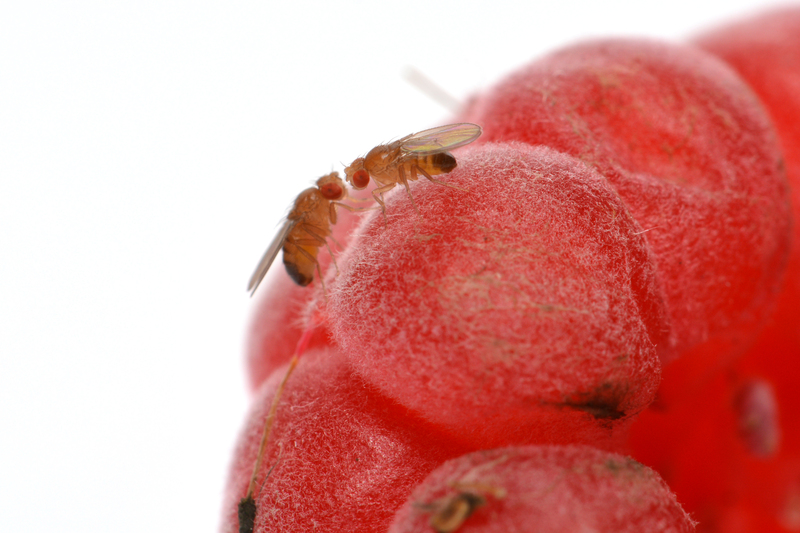Mastering Curtain Cleanliness: Expert Tips for Pristine Drapes
Posted on 17/09/2025
Mastering Curtain Cleanliness: Expert Tips for Pristine Drapes
Elevate the ambiance of your home with sparkling clean curtains! If you are searching for the ultimate guide on mastering curtain cleanliness, you've landed in the right place. Not only do fresh drapes enhance the beauty of your living spaces, but they also promote a healthier, allergen-free environment. This comprehensive article uncovers expert curtain care strategies, essential maintenance routines, and secrets for achieving spotless drapery fabric, ensuring your curtains remain pristine and luxurious year-round.

Why Curtain Cleanliness Matters
Curtains are more than just a decorative feature; they act as filters, trapping dust, pollen, pet hair, and odors from the surrounding environment. Over time, neglected drapes can become breeding grounds for allergens, bacteria, and even mold. Dirty curtains can dull the appearance of any room, creating a less inviting atmosphere. Therefore, *keeping your curtains clean* isn't merely about aesthetics--it contributes greatly to the overall hygiene and air quality of your home.
Health Benefits of Pristine Drapery
- Reduces indoor pollutants: Regularly cleaning your drapes helps remove trapped dust, pollen, and animal dander, minimizing respiratory irritants.
- Decreases allergy symptoms: Clean curtains can significantly improve allergy symptoms for sensitive individuals in the household.
- Eliminates mold spores: Particularly in damp environments, curtain cleanliness can help prevent the spread of mold and mildew.
- Improves air quality: Fresh drapes contribute to a cleaner, fresher ambiance by eliminating lingering odors and airborne particles.
Understanding Different Types of Curtains and Their Cleaning Needs
Every curtain type demands a specialized cleaning approach. Before diving into cleaning, identify the fabric and embellishments of your drapery. Whether you have velvet, lace, silk, polyester, or cotton curtains, proper treatment ensures your drapes remain undamaged and pristine for longer.
Popular Curtain Fabrics and Cleaning Techniques
- Sheer and Lace Curtains: Delicate fabrics such as lace and sheer panels require gentle hand-washing or a mild machine cycle inside a mesh laundry bag.
- Cotton and Polyester Curtains: Many can be safely machine-washed but always refer to the manufacturer's care label for specific guidelines.
- Velvet Drapes: Often require vacuuming with a soft brush attachment or professional dry-cleaning to protect texture and color.
- Silk Curtains: Hand-washing with cold water and a gentle detergent is preferable. Avoid wringing or machine agitation.
- Blackout and Thermal Curtains: Spot-clean as needed. Excessive machine-washing may damage insulating layers.
Essential Tools for Cleaning Curtains
Building an effective curtain-cleaning toolkit can make routine maintenance easier and extend the life of your drapes. Here are some essentials to keep at hand for pristine curtain maintenance:
- Vacuum cleaner with an upholstery attachment
- Lint roller for removing pet hair and dust
- Gentle detergent (free of harsh chemicals or bleach)
- Steamer for wrinkle removal and fabric refreshment
- Mesh laundry bags for delicate materials
- Spray bottle for spot cleaning
- Soft microfiber cloths for dusting or blotting stains
Step-by-Step Guide to Mastering Curtain Cleanliness
Follow these expert curtain cleaning tips to ensure your drapes remain impeccable, vibrant, and free from dust or allergens:
1. Routine Maintenance: Keeping Curtains Dust-Free
- Weekly Vacuuming: Using a vacuum cleaner with an upholstery brush, gently run along the curtain surface from top to bottom. Focus on pleats, folds, and the top header where dust collects.
- Monthly Shaking: Carefully remove drapes from the rod and take them outside. Shake vigorously to dislodge loose dust and debris.
- Lint Rolling: For fabrics prone to collecting hair or lint, use a lint roller or a sticky brush for quick cleaning between washes.
2. Deep Cleaning: Washing Curtains Properly
- Read the Label: Always check care tags for washing instructions. Not all curtains are machine-washable.
- Hand-Wash Delicates: Fill a tub with cold water and a few drops of gentle detergent. Swish curtains gently, soak for 10-15 minutes, rinse thoroughly, and hang to dry.
- Machine Wash (If Safe): Use a delicate cycle with cold water. Place curtains in a mesh laundry bag for protection. Avoid overcrowding the machine.
- Dry Before Rehanging: Air-drying is recommended to prevent shrinkage. Hang curtains back while slightly damp to eliminate wrinkles naturally.
3. Spot Cleaning Stains and Spills
Immediate attention is crucial when stains occur. The longer a stain sits, the harder it becomes to remove.
- Blot--Don't Rub: Use a clean, white microfiber cloth to gently blot liquid stains as soon as possible.
- DIY Cleaning Solution: Mix a cup of lukewarm water with a pinch of mild detergent. Dab onto the stain using a soft cloth. Avoid over-wetting the fabric.
- Test First: Always test commercial stain removers on an inconspicuous seam to avoid discoloration or damage.
4. Odor Removal and Freshening Up
- Steam Cleaning: Use a handheld steamer to refresh fabrics, remove light stains, and kill odor-causing bacteria.
- Natural Fresheners: Lightly mist curtains with a mixture of water and a few drops of lavender or lemon essential oil for a pleasant scent.
- Sun Drying: Hang curtains outside on a breezy, sunny day to eliminate musty odors and provide natural disinfection.
Seasonal & Annual Curtain Care Checklist
While weekly maintenance is important for dust control, deep-cleaning curtains should be part of your seasonal or spring cleaning routine. Here's an annual curtain cleaning schedule to follow for pristine drapes all year long:
- Spring: Remove and machine-wash or dry-clean all window treatments. Inspect for damage or fading.
- Summer: Clean sheers and lightweight fabrics, which tend to collect pollen during warmer months.
- Fall: Wash or vacuum heavier drapes and prepare for closed windows ahead of winter.
- Winter: Spot-clean and maintain curtains, especially if windows are often shut and condensation is likely.
Troubleshooting Common Curtain Cleaning Issues
How to Handle Shrinking or Color Fading
- Avoid Hot Water: Only use cold or lukewarm water for washing curtains to minimize shrinking and fading.
- Skip the Dryer: High heat causes fabric distortion and weakens fibers. Air dry whenever possible.
- Use Fabric-Safe Detergents: Choose non-bleach, color-safe cleaners designed for delicate textiles.
Removing Stubborn Stains
- Grease Stains: Sprinkle with cornstarch, let sit to absorb oil, then brush away and dab with diluted detergent.
- Mold or Mildew: Mix one part white vinegar with three parts water. Dab gently onto the stain and allow it to air dry in the sun.
- Wine or Fruit Juice: Blot immediately, then treat with cool water and a mild stain remover.
Dealing with Wrinkles and Creases
- Steam On the Rod: Use a garment steamer on hanging curtains to ease out wrinkles without removing them.
- Ironing Caution: For heat-safe fabrics, iron on the reverse with a pressing cloth. Avoid direct contact for delicate fabrics.
Professional Curtain Cleaning: When and Why to Consider It
Not all draperies are designed for home cleaning, especially those made from luxurious silks, embroidered textiles, or with ornate trims. For these, professional curtain cleaning services are highly recommended.
- Benefits of professional cleaning:
- Uses specialized machinery and detergents tailored for curtain fabrics
- Ensures thorough removal of deep-seated dust, allergens, and stains
- Prevents shrinkage, fading, and fabric damage
- Convenient pickup and rehanging services often provided
- Recommended frequency: Every 12-18 months for high-quality drapery, or as needed for allergy-sensitive households
Prolonging Curtain Freshness: Preventative Practices
Maintaining spotless drapes doesn't end with cleaning. Adopting preventative measures ensures your hard work lasts longer, keeping your window dressings bright and new:
- Use tie-backs: This keeps fabric away from open windows, reducing exposure to dust and moisture.
- Window screens: Install screens to limit the entry of dust, pollen, and insects.
- Regular room cleaning: The cleaner your home, the less debris for your curtains to collect.
- Rotate drapes: If possible, rotate curtains between rooms or swap panels to prevent uneven fading.
- Protect from direct sunlight: Line heavily sun-exposed drapes with a UV-resistant backing to combat color loss and fabric wear.
Eco-Friendly and Allergy-Safe Cleaning Techniques
Environmentally conscious cleaning is not only good for the planet but also for indoor air quality, especially for those prone to allergies. Harness the power of nature to maintain pristine drapery:
- Baking soda and vinegar: A classic duo for eliminating odors and breaking down stains without harsh chemicals.
- Plant-based detergents: Opt for fragrance-free and biodegradable detergents for a greener clean.
- Allergy-proofing routines: Wash curtains more frequently during allergy seasons and use HEPA filtration in vacuums.

FAQs: Curtain Cleaning Questions Answered
How often should curtains be cleaned?
Lightly vacuum or dust curtains weekly and aim for a deep clean every 3 to 6 months. More frequent washing may be necessary in homes with pets, smokers, or allergy sufferers.
Are all curtains machine washable?
No, always check the care label first. Delicate, lined, or embellished drapes usually require hand-washing or professional cleaning.
Can curtains go in the dryer?
Most curtains should be air dried to prevent shrinkage or damage from high heat. Use a low, air-only cycle if the fabric's label allows it.
How to keep curtains looking new longer?
Conclusion: Achieving Curtain Perfection
Whether your drapes are a statement piece in the living room or a subtle accent in the bedroom, mastering curtain cleanliness is key to a brighter, healthier home. By understanding your curtain's needs, investing in regular care, and knowing when to seek professional help, you ensure your window treatments remain pristine, fresh, and beautiful year after year. Implement these expert cleaning strategies now and enjoy radiant drapes that accentuate your living spaces like never before.
If you're serious about immaculate curtains, bookmark this guide as your go-to resource for everything related to pristine drapery care!





